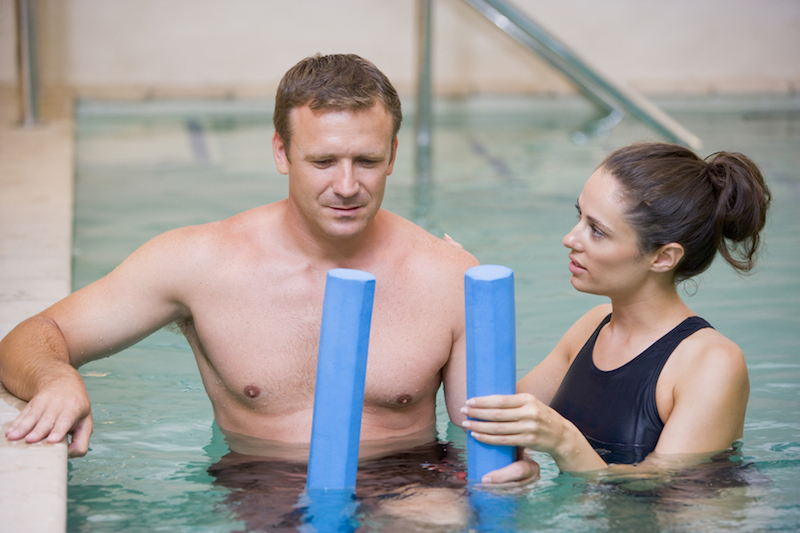Aquatic Therapy for Traumatic Brain Injuries
Traumatic brain injuries are injuries that come from the brain being struck by an outside force. These injuries have a cataclysmic effect on the rest of the body, causing muscle groups to weaken or shut down. The rehab from a traumatic brain injury, or TBI, is quite extensive and difficult. But aquatic therapy has turned into an invaluable tool for rehabilitating victims of traumatic brain injuries.
Effects of Traumatic Brain Injuries

The causes of TBIs vary but the majority come from automobile accidents, contact sports, falls, or other abrupt impacts to the head. It’s important for a doctor to assess all brain injuries, especially if there is any loss of consciousness. Upon examination the doctor may classify the TBI as mild or severe.
- Mild brain injury: Symptoms include headaches, difficulty thinking, attention deficits, memory issues and mood swings. A traumatic brain injury is considered mild if the loss of consciousness or confusion lasts 30 minutes or less.
- Severe brain injury: This results when the loss of consciousness and memory loss lasts for more than 30 minutes or the skull is penetrated for more than 24 hours. Loss of motor function and strength, slurred speech, loss of thinking, or even vomiting and seizures can happen.
Based on the extent of injury, physical therapy may be required to recover fully. In some cases aquatic therapy is used to help TBI patients who may not have the strength or coordination needed for other types of therapy.
What is Aquatic Therapy?
Aquatic physical therapy is supervised physical therapy that takes place in a pool or a body of water. The patient can be submerged in the water partially, fully (with everything but the head being underwater) or floating. The water is at a warm temperature, which helps with blood circulation and flow. The water’s buoyancy reduces strain on muscles and joints, making it ideal for recovering from an injury.
How Does Aquatic Therapy Help with Traumatic Brain Injuries?
A severe traumatic brain injury can weaken the joints and muscles to the point where they can’t support your body’s weight or motion capabilities on land. Aquatic therapy gives TBI patients more buoyancy which makes it easier to perform the moves. The water also provides the resistance needed to strengthen muscles. The water serves as support for your body weight through hydrostatic pressure, allowing your body’s joints a greater range of motion with a lesser amount of stress. This increased support (which is up to 90 percent when fully submerged) allows patients to progress through their recovery exercises with greater speed and effectiveness. The water also helps with maintaining the body’s balance.
The water temperature can also help with blood circulation and muscle tone. Water heated to 85 to 90 degrees helps the muscles work from a relaxed state, reducing the pain from exercise by providing gentle resistance with the buoyancy of the water. With less pain, less stress, and increased circulation and cardiovascular fitness that results from exercising in a submerged state, patients are able to function better on dry land and gain confidence. The confidence and increased recovery speed are reasons why aquatic therapy is beneficial to patients who have suffered a traumatic brain injury.
If you or someone you know has been diagnosed with a TBI and needs to increase their strength, aquatic therapy may be an option. Contact Dr. Fayaz for more information about where this is available in Spring, The Woodlands and North Houston.
